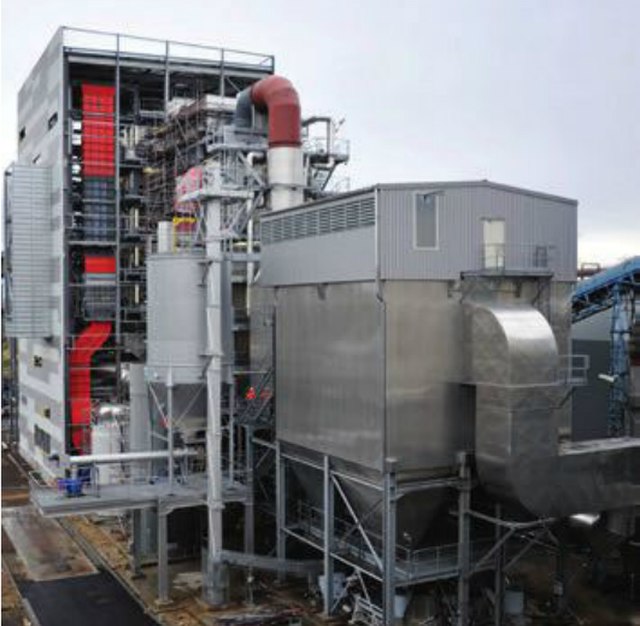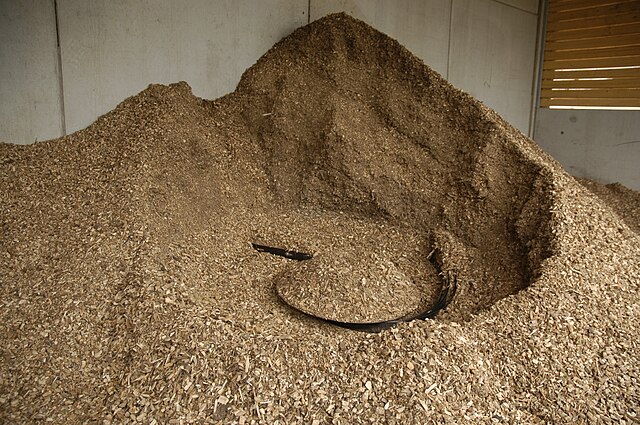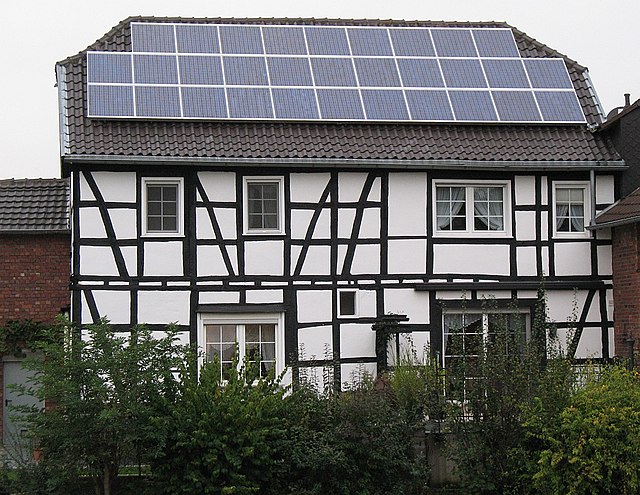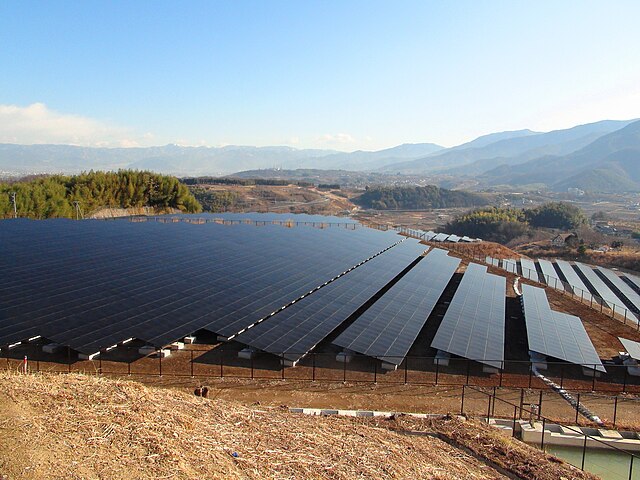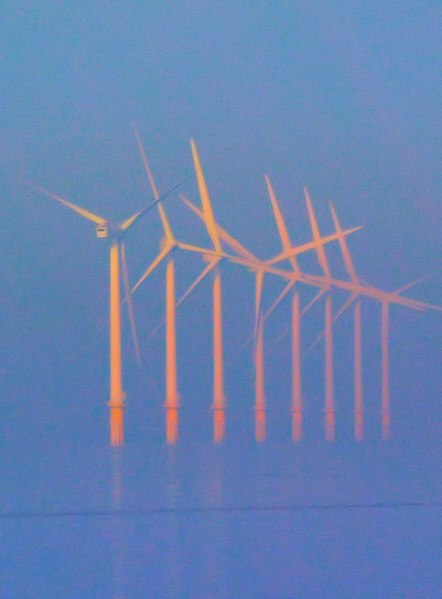Bioenergy is a type of renewable energy that is derived from plants and animal waste. The biomass that is used as input materials consists of recently living organisms, mainly plants. Thus, fossil fuels are not regarded as biomass under this definition. Types of biomass commonly used for bioenergy include wood, food crops such as corn, energy crops and waste from forests, yards, or farms.
Sugarcane plantation to produce ethanol in Brazil
A CHP power station using wood to supply 30,000 households in France
Biomass plant in Scotland.
Wood chips in a storage hopper, in the middle an agitator to transport the material with a screw conveyor to the boiler
Renewable energy is energy from renewable natural resources that are replenished on a human timescale. Using renewable energy technologies helps with climate change mitigation, energy security, and also has some economic benefits. Commonly used renewable energy types include solar energy, wind power, hydropower, bioenergy and geothermal power. Renewable energy installations can be large or small. They are suited for urban as well as rural areas. Renewable energy is often deployed together with further electrification. This has several benefits: electricity can move heat and vehicles efficiently, and is clean at the point of consumption. Variable renewable energy sources are those that have a fluctuating nature, such as wind power and solar power. In contrast, controllable renewable energy sources include dammed hydroelectricity, bioenergy, or geothermal power.
A small, roof-top mounted PV system in Bonn, Germany
Komekurayama photovoltaic power station in Kofu, Japan
Burbo, NW-England
Sunrise at the Fenton Wind Farm in Minnesota, United States


